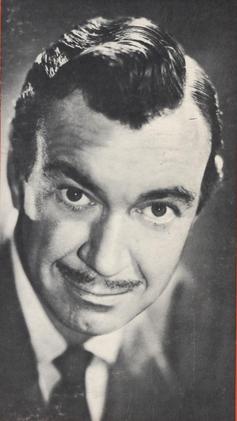
Thurl Arthur Ravenscroft was an American actor and bass singer. He was well known as one of the booming voices behind Kellogg's Frosted Flakes animated spokesman Tony the Tiger for more than five decades. He was also the uncredited vocalist for the song "You're a Mean One, Mr. Grinch" from the classic Christmas television special Dr. Seuss' How the Grinch Stole Christmas!
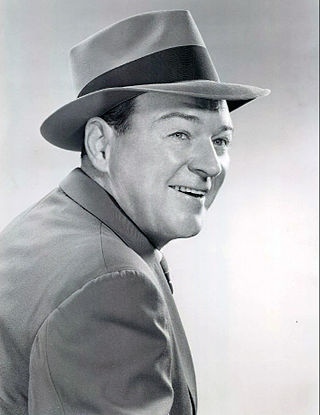
William Dennis Gargan was an American film, television and radio actor. He was the 5th recipient of the Screen Actors Guild Life Achievement Award in 1967, and in 1941, was nominated for the Academy Award for Best Supporting Actor for his role as Joe in They Knew What They Wanted. He acted in decades of movies including parts in Follow the Leader, Rain, Night Flight, Three Sons, Isle of Destiny and many others. The role he was best known for was that of a private detective Martin Kane in the 1949–1952 radio-television series Martin Kane, Private Eye. In television, he was also in 39 episodes of The New Adventures of Martin Kane.

Swiss Family Robinson is a 1940 American film released by RKO Radio Pictures and directed by Edward Ludwig. It is based on the 1812 novel The Swiss Family Robinson by Johann David Wyss and is the first feature-length film version of the story.
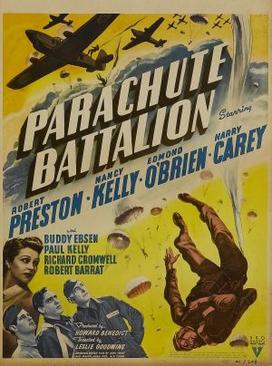
Parachute Battalion is a 1941 American war film directed by Leslie Goodwins and starring Robert Preston and Nancy Kelly. The supporting cast includes Edmond O'Brien, Harry Carey, and Buddy Ebsen. It was produced and distributed by RKO Pictures.

The Falcon's Brother is a 1942 American crime drama film in which George Sanders, who had been portraying "The Falcon" in a series of films, appears with his real-life brother Tom Conway; with Sanders handing off the series to Conway, who would play the new Falcon in nine subsequent films. Jane Randolph was featured in a supporting role. The Falcon's Brother, the only one to feature two Falcons, was directed by Stanley Logan.

Bombardier is a 1943 film war drama about the training program for bombardiers of the United States Army Air Forces. The film stars Pat O'Brien and Randolph Scott. Bombardier was nominated for an Oscar in 1944 for the special effects used in the film. It was largely filmed at Kirtland Army Air Field, New Mexico, site of the first bombardier training school.

The Falcon Takes Over, is a 1942 black-and-white mystery film directed by Irving Reis. Although the film features the Falcon and other characters created by Michael Arlen, its plot is taken from the Raymond Chandler novel Farewell, My Lovely, with the Falcon substituting for Chandler's archetypal private eye Philip Marlowe and the setting of New York City replacing Marlowe's Los Angeles beat. The B film was the third, following The Gay Falcon and A Date with the Falcon (1941), to star George Sanders as the character Gay Lawrence, a gentleman detective known by the sobriquet the Falcon.

Look Who's Laughing is a 1941 American comedy film directed by Allan Dwan It was produced and distributed by RKO Pictures. The film is built around a number of radio stars from the Golden Age of Radio and centers around radio personality Jim Jordan as Fibber McGee from the comic duo, Fibber McGee and Molly, who plans to build an aircraft factory in a small town. Look Who's Laughing was followed by Here We Go Again (1942), with many of the radio stars reprising their performances. It is also known by the alternative title Look Who's Talking.

The Navy Comes Through is a 1942 American World War II film directed by A. Edward Sutherland. It stars Pat O'Brien, George Murphy and Jane Wyatt. Vernon L. Walker and James G. Stewart were nominated for an Oscar for Best Special Effects. The film was based on Borden Chase's 1939 short story "Pay to Learn". The working titles of the film were Pay to Learn and Battle Stations. The film was the first RKO Pictures use of a new radio signal trademark that spelled out the word "victory." Prior to this, the studio's radio signal trademark spelled out "RKO."

RKO Radio Pictures Inc., commonly known as RKO Pictures or simply RKO, was an American film production and distribution company, one of the "Big Five" film studios of Hollywood's Golden Age. The business was formed after the Keith-Albee-Orpheum theater chain and Joseph P. Kennedy's Film Booking Offices of America studio were brought together under the control of the Radio Corporation of America (RCA) in October 1928. RCA executive David Sarnoff engineered the merger to create a market for the company's sound-on-film technology, RCA Photophone, and in early 1929 production began under the RKO name. Two years later, another Kennedy concern, the Pathé studio, was folded into the operation. By the mid-1940s, RKO was controlled by investor Floyd Odlum.
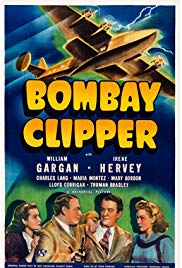
Bombay Clipper is a 1942 aviation drama film directed by John Rawlins and starring William Gargan and Irene Hervey. The film features Maria Montez in an early role. Turhan Bey also appears.
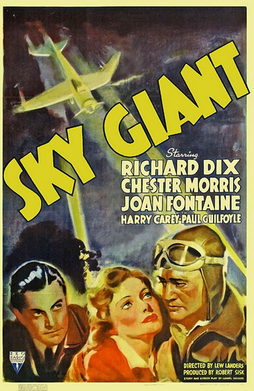
Sky Giant, also known as Ground Crew and Northern Flight, is a 1938 drama film directed by Lew Landers. The film stars Richard Dix, Chester Morris and Joan Fontaine. The plot revolves around a love triangle with two pilots in love with the same woman.

A Date with the Falcon is the second in a series of 16 films about the suave detective nicknamed The Falcon. The 1942 sequel features many of the same characters as the first film, The Gay Falcon (1941).
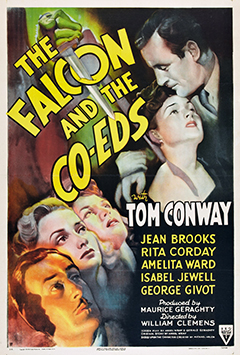
The Falcon and the Co-eds is a 1943 film under the direction of William Clemens, and produced by Maurice Geraghty, the same team that had worked on The Falcon in Danger (1943) and would stay together for the next film in the Falcon series. The Falcon and the Co-eds was the seventh of 16 in the Falcon series. The story and screenplay was by Ardel Wray, a frequent collaborator with Val Lewton in his RKO horror series, who added supernatural elements to the proceedings.

The Falcon in San Francisco is a 1945 American crime and mystery film directed by Joseph H. Lewis and stars Tom Conway, Rita Corday and Edward Brophy, who played the recurring role of "Goldie" Locke. The film was the 11th in The Falcon series of detective films, and the eighth featuring Conway as the amateur sleuth. The Falcon in San Francisco was the final film in the series produced by Maurice Geraghty, after which budgets were reduced and location shooting largely abandoned.
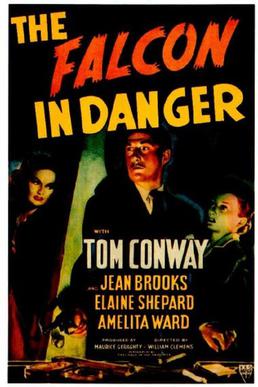
The Falcon in Danger is a 1943 American mystery film directed by William Clemens and starring Tom Conway, Jean Brooks, Amelita Ward and Elaine Shepard. The film was the sixth of thirteen The Falcon detective films produced by RKO, all starring Conway.

The Marines Fly High is a 1940 action film, starring Richard Dix, Chester Morris and Lucille Ball and directed by George Nicholls, Jr. and Benjamin Stoloff from a story by A.C. Edington.

Roar of the Dragon is a 1932 American Pre-Code adventure film directed by Wesley Ruggles and written by Howard Estabrook and released on July 8, 1932. The film stars Richard Dix, Gwili Andre, Edward Everett Horton, Arline Judge, and ZaSu Pitts. It follows tourists and a riverboat crew as they resist attacks from a vengeful bandit while the riverboat is in repair. The story is based on A Passage to Hong Kong by George Kibbe Turner. Some concern arose concerning Horton's pay, but it remained unaddressed. Upon its release, Roar of the Dragon received reviews both praising and criticizing its action elements.

The Purple V is a 1943 American war film directed by George Sherman and starring John Archer, Mary McLeod and Fritz Kortner. The Purple V marked German stage star Fritz Kortner's American film debut. Actors John Archer and Mary McLeod were borrowed from M-G-M for the production.
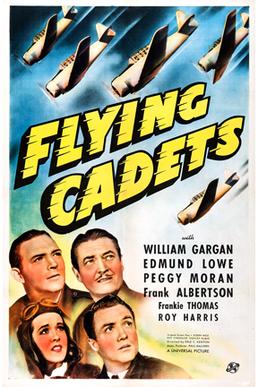
Flying Cadets is a 1941 American adventure film directed by Erle C. Kenton and written by George Waggner, Roy Chanslor and Stanley Rubin. The film stars William Gargan, Edmund Lowe, Peggy Moran, Frank Albertson, Frankie Thomas and Riley Hill. Flying Cadets was released on October 24, 1941, by Universal Pictures.





















